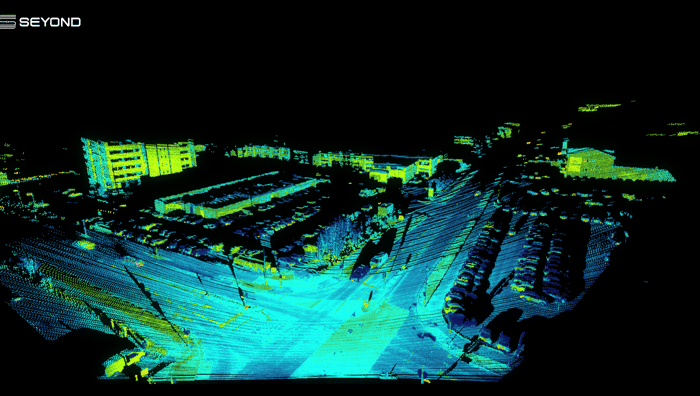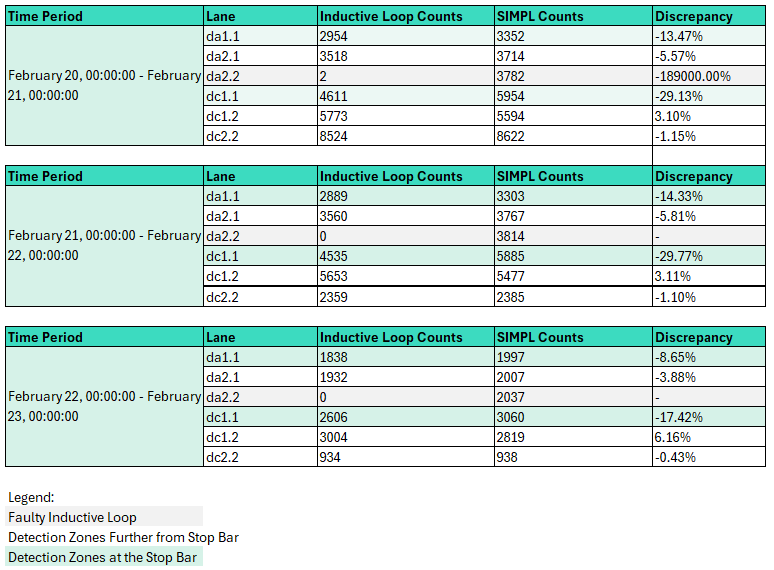SIMPL-Intersection vs. Inductive Loops in Reykjavik, Iceland
Test Overview
Seyond, in partnership with Reykjafell, conducted an accuracy assessment of its ITS solution, SIMPL-Intersection, at an intersection in Reykjavik, Iceland. The test was performed over three consecutive 24-hour periods in February 2025, under winter conditions, including low light, darkness, snow, and even scattered showers. The purpose of this study was to compare the vehicle count accuracy of SIMPL-Intersection with existing inductive loops across six detection zones.

Data Collection
The count data was collected over a total of 72 hours (3 days) for six detection zones. Both systems operated simultaneously to measure vehicle counts and compare discrepancies in detection accuracy.
Results Summary

1. Faulty Inductive Loop:
One of the inductive loops (da2.2) exhibited significant malfunction, recording only two vehicle counts over the entire 72-hour period. This indicates a failure in detection reliability for that specific zone.
2. Detection Zones Further from the Stop Bar:
For three detection zones located further behind the stop bar (dc1.2, dc2.2 and da2.1), discrepancies between SIMPL-Intersection and the inductive loops ranged from -5.57% to 6.16%. This variation is within acceptable limits and suggests that both systems provided comparable results in these locations.
3.Detection Zones at the Stop Bar:
For two detection zones placed directly at the stop bar (da1.1 and dc 1.1), the discrepancy was more pronounced, ranging between -29.77% and -8.65%. This substantial difference can be attributed to the geometry of the installed inductive loops, which cover multiple lanes approaching the intersection. As a result, inductive loops fail to register individual vehicles accurately when multiple vehicles arrive simultaneously.
Conclusion
The test results highlight the limitations of the existing inductive loops in accurately detecting each vehicle, particularly in multi-lane scenarios near the stop bar. The significant discrepancy in these areas suggests that SIMPL-Intersection offers a more reliable and precise vehicle detection system under winter conditions. Furthermore, the detection failure of one of the inductive loops underscores the maintenance challenges associated with traditional detection methods.
SIMPL-Intersection demonstrated robust performance throughout the test period, accurately counting vehicles across all detection zones while operating under adverse weather and lighting conditions. These results further support the advantages of LiDAR-based detection in improving intersection efficiency and safety.
Results obtained during the first 15-minute period showed very small deviation for the SIMPL-Intersection’s virtual loops (between -5% and 2%, with a majority of 0%) while the inductive loop showed deviation from -20% to 147%.